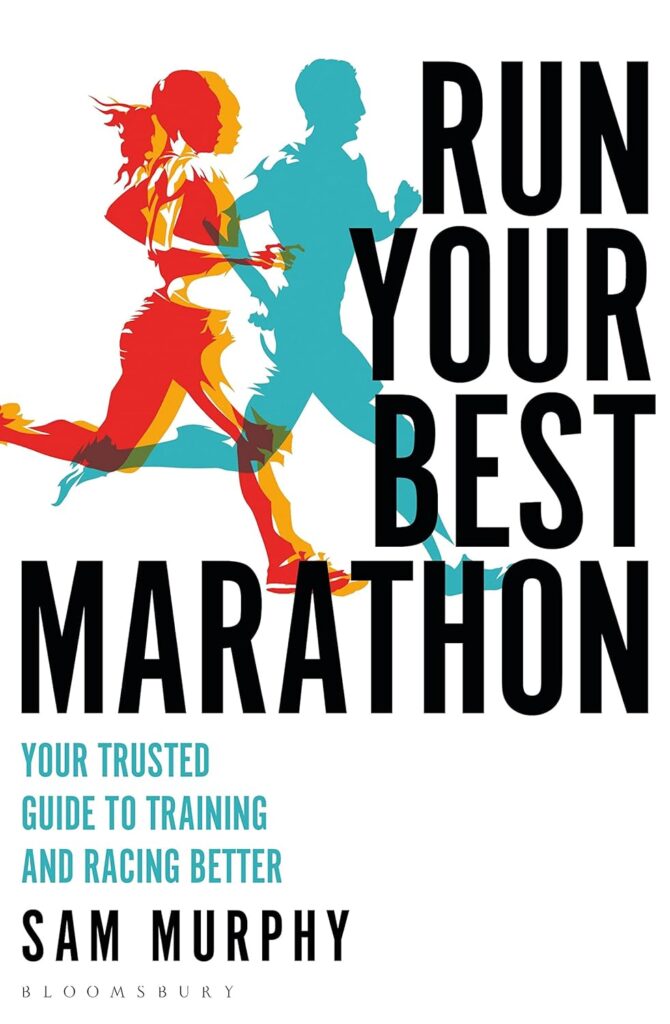I like this book and recommend it, perhaps even for those not intending to run a marathon, or not yet.
Murphy is a runner and journalist, and takes the trouble to explain the science and to back up her statements with references to credible research. This is important because there are a surprising (to me) number of unresolved questions for those who want to optimize their running. Stretching, for example, before or after a run. “I’ve yet to find any evidence that stretching – of any kind – actually makes you run faster,” says Murphy. Does it reduce injury? “No clear effect,” she writes; but adds that there is evidence that if you think it helps, it does.
I would still call this matter of stretching unresolved. Julian Goater and Don Melvin, in their 2012 book The Art of Running Faster, have an entire chapter on the subject and say that “You do need to stretch – regularly … in my experience regular stretching is the key to avoiding injury.”
Murphy also has a down-to-earth section on how to choose trainers. “Many of the claims made about how shoes can protect or correct your feet are exaggerated or just plain wrong,” Murphy writes, with reference to research. She does confirm though that those super expensive carbon-fibre plate shoes are faster, but also notes some downsides. Comfort is the most important thing, she feels. I also like this great tip: when buying shoes, take out the insoles and stand on them. “Your whole foot should be within the boundary of the insole,” she says, otherwise you will have cramping which can be a disaster (it was for me).
The book takes the reader through the art and science of training, and then offers a set of training plans. She categorizes the plans as full throttle (training five days a week), steady state (mostly four days a week) and minimalist (mostly three days a week). In each category there are plans for experienced, and first timer. Runs are described as easy, tempo, marathon pace and so on; but you have to work out the exact pacing yourself, for which there is extensive guidance, as this depends on your capabilities and targets.
These schedules are not as demanding as those in the classic book Advanced Marathoning by Pete Pfitzinger and Scott Douglas, nor is Murphy’s book as technical. Experienced runners would likely benefit more from the Pfitzinger and Douglas book; yet having read both, I still found Run your best Marathon useful.
Where this title wins though is in its approachability, down to earth style, and coverage of those small details which experienced runners seem just to know, but rarely explain. This is especially true in the second half of the book, about practicalities, body maintenance, how to choose a race, and nutrition/hydration. There is advice on exactly what to eat and drink, and how much, even down to tips like how to drink while running, without choking or coughing. There is also a complete checklist of what you might need for race day, though I am not sure about the bin liner she suggests for keeping dry before the race!
The book is very approachable and especially suitable for those contemplating their first marathon (as I am). Much of it applies to other distances as well, certainly longer runs of 10 miles or more, and there is so much general running advice that it may be worth a read even for those who have no intention of subjecting their bodies to a gruelling 26.2 mile race.
Run your best Marathon by Sam Murphy (Bloomsbury, ISBN 978-1-4729-8952-9)
